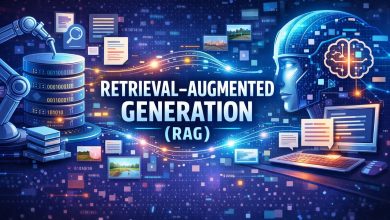
The Missed Moment
It’s 3:47 PM on a rainy Thursday afternoon in Cleveland. Sarah, a long-time customer of a telecom provider, dials in to cancel her service. She’s frustrated. Her internet has dropped twice in the past week during remote work meetings, and her bill has crept up with unexplained charges. After waiting five minutes, she’s greeted not by a human, but by a smooth, confident voice: an AI-powered virtual assistant.
“Hi Sarah! I can help you with account changes, billing questions, or technical support. How can I assist you today?”
Sarah, tired and slightly exasperated, responds, “I want to cancel my service.”
Without hesitation, the AI agent replies:
“I’m sorry to hear that. To confirm your identity, please provide the last four digits of your account number.”
The system proceeds flawlessly, technically speaking. It authenticates Sarah, processes the request, and provides final billing details. What it doesn’t do and what it can’t do is notice the hesitation in her voice, the disappointment in her tone, or the subtle pause before she said “cancel.” It doesn’t ask why she’s leaving. It doesn’t offer an apology. It doesn’t detect the slim but critical opportunity to save the customer with a retention offer.
And just like that, a 12-year customer relationship ends, not because of technical failure, but because of emotional blindness.
Emotional Intelligence: What AI Still Doesn’t Understand
Artificial Intelligence has made tremendous leaps in language understanding, task completion, and contextual reasoning. Yet, it remains profoundly deficient in one domain where humans excel instinctively: emotional intelligence (EQ).
Emotional intelligence isn’t just about detecting whether someone is “happy” or “angry.” It includes:
- Understanding tonality and inflection
- Recognizing hesitations, pauses, and stumbles
- Interpreting non-verbal cues in voice
- Responding appropriately to emotional content
- Knowing when to escalate to a human
- Modulating its own “voice” in a way that resonates empathetically
These are skills that define great customer service agents, human ones. And they’re skills that, despite advances in LLMs and voice synthesis, AI systems still lack in production settings.
Why EQ Matters More Than You Think in Customer Service
Contact centers are on the front lines of customer relationships. Every call, every chat, every moment is a brand-defining interaction. And emotion plays a central role in how customers remember these exchanges.
Consider:
- 70 percent of buying experiences are based on how the customer feels they are being treated (McKinsey).
- 96 percent of customers say customer service impacts their brand loyalty (Microsoft).
- Emotionally intelligent interactions can increase customer retention by 20 percent or more, according to Forrester research.
Now layer AI into that. The goal of deploying AI in call centers isn’t just to handle volume or reduce costs, it’s to preserve, and ideally enhance, the customer experience. But when AI lacks the ability to mirror or respond to human emotion, it risks doing the opposite.
Let’s Go Back to Sarah
In a human-to-human scenario, here’s how that conversation might have gone differently:
Sarah: “I want to cancel my service.”
Agent: “Oh no, I’m really sorry to hear that, Sarah. Was there something specific that prompted this decision?”
Sarah: [brief pause] “Yeah, the service has just been… unreliable lately. And the last bill was higher than I expected.”
Agent: “That’s totally understandable. I can definitely look into the billing issue for you, and we may be able to improve your plan or offer a discount. Would it help if we solved the service issue before canceling?”
That’s a moment of recovery. It’s subtle. It’s emotional. And it depends entirely on the agent recognizing the why behind the cancellation, not just the what. Without emotional intelligence, an AI agent will miss that every time.
The Limitations of Today’s AI in EQ
Most AI agents deployed in contact centers today are built on large language models (LLMs) combined with automated speech recognition (ASR) and voice synthesis. They excel at:
- Understanding spoken language with high accuracy
- Responding fluently in real-time
- Handling complex workflows across CRM and billing systems
- Personalizing responses using customer data
What they don’t do well is detect emotional nuance. Why?
Because emotion is conveyed not just in words, but in how those words are said:
- The tempo of speech (e.g., fast, flustered)
- The pitch and tone (e.g., rising inflection when unsure or stressed)
- The length and placement of pauses
- The subtle sigh before answering
- The interruption mid-sentence
These are non-verbal signals that human agents pick up on subconsciously, and which current AI systems largely ignore unless specifically trained to detect them.
The Case for EQ-Enabled AI
Imagine an AI system that could analyze not just what was said, but how it was said. That could understand, for instance, that:
- A 0.8-second pause before “cancel” suggests hesitation
- A quiver in pitch indicates frustration or fatigue
- Repetition of phrases like “it’s just been hard” indicates emotional overwhelm
- A sudden drop in tempo signals discouragement
Now imagine that same system adjusting its own behavior in real time:
- Slowing down its speech
- Lowering its pitch slightly
- Using language like “I understand how frustrating that must be”
- Offering to escalate to a human when emotional thresholds are crossed
That’s EQ-enabled AI. It doesn’t replace empathy, but it simulates the conditions for empathetic interaction, and that can be game-changing in customer experience.
A Brief Look Under the Hood: What Makes EQ AI Possible
Enabling emotional intelligence in AI requires a fusion of disciplines:
- Natural Language Processing (NLP) – To understand lexical sentiment and conversational intent.
- Voice Analysis / Paralinguistics – To extract vocal features like tone, pitch, tempo, volume, and rhythm.
- Emotion Classification Models – To label utterances with emotional states (e.g., frustration, calm, sadness).
- Contextual Memory – To track emotional state throughout a conversation, not just at the sentence level.
- Conversational Policy Engines – To determine how AI should respond based on detected emotion and business goals.
Importantly, these components must work in real-time and in sync. It’s not just about detecting emotion, it’s about responding in the moment, appropriately.
Obstacles to Adoption
So if EQ-enabled AI is so promising, why isn’t it more common in contact centers today?
- Latency: Real-time emotion detection is computationally expensive and must integrate seamlessly with speech pipelines.
- Noise and Variability: Accents, background noise, and cultural expressions complicate emotion modeling.
- Privacy Concerns: Analyzing emotion from voice data raises ethical and compliance challenges.
- Training Data Scarcity: Emotionally annotated voice datasets are limited and hard to scale across languages.
- Business Buy-In: Many enterprises prioritize cost-savings and call containment over nuanced customer engagement, for now.
Yet, as generative AI becomes commoditized, EQ will be the differentiator. Not every contact center needs another chatbot, but every brand wants customers who feel heard.
What’s Next: Augmented Agents, Not Replacements
The goal of EQ AI isn’t to replace humans, it’s to augment them. In many cases, emotionally aware AI can act as the first line of support, triaging based on not just topic but emotional tone:
- Calm caller asking about billing → AI handles with confidence
- Agitated caller demanding resolution → Route to senior human agent
- Upset long-term customer hesitating to cancel → Escalate to retention flow with emotional intelligence baked in
In human-agent interactions, EQ-aware systems can act as co-pilots, flagging emotional shifts in real time, recommending phrasing, and suggesting when to de-escalate or pause. The AI doesn’t have to feel, it just needs to understand what feelings are present and behave accordingly.
Final Thoughts: Emotion Is the Interface
For years, we’ve treated user interfaces as buttons, menus, and commands. But for voice-driven AI, emotion is the interface. The ability to understand how someone feels is no longer optional in customer experience, it’s foundational.
The contact center of the future won’t just be powered by artificial intelligence. It will be shaped by emotional intelligence, and the brands that get there first will win not just transactions, but trust.
Until then, stories like Sarah’s will continue to happen: technically correct, emotionally tone-deaf, and ultimately, lost opportunities.
For more information, please visit https://humach.com





